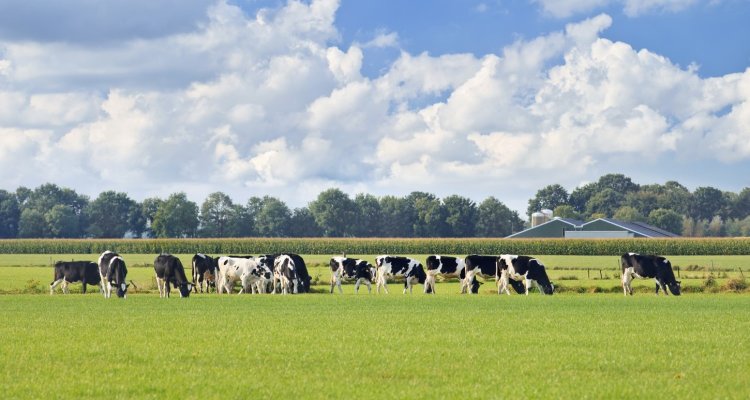
News
Breeding climate-friendly dairy cows
In the Netherlands, 75 percent of all methane that is emitted into the atmosphere in agriculture comes from ruminants. Animal breeding can help farmers to cost-effectively reduce emissions, which would result in long term effects. A study by Wageningen University & Research which was recently published in the Journal of Dairy science shows that around 20 percent of variation in methane emissions between individual cows comes from the genetic background of the cow. These results indicate that it is possible to breed for cows that are low methane emitters.
The study showed that around 20 percent of variation in methane emissions between individual cows comes from the genetic background of the cow, and is therefore heritable. This shows that it is possible to breed for cows that are low methane emitters. In addition, the study provides practical recommendations that show that 25 methane measurements should be taken from ten daughters of each bull in order to get a good indication of their genetic potential for methane emissions through the genetic relationship with its offspring.
The potential of animal breeding
Researchers all over the world are investigating whether it is possible to breed for cows with low methane emissions. Mitigation by animal breeding is permanent and cumulative; in each new generation of dairy cows the methane emissions will be lower than the generation before. Furthermore, breeding does not require farmers to make changes in their herd management, as would be the case when, for example, providing feed additives, and is therefore a cost-effective solution.
Methane is a potent greenhouse gas that has a large contribution to global warming. It is part of short carbon cycles, meaning that it is broken down in the atmosphere and stored as plant organic matter within an few decades. Nonetheless, there is high urgency in reducing methane emissions. The warming effect of methane is about 28 times stronger than carbon dioxide and atmospheric methane levels are still rising. Reducing methane emissions will contribute to mitigating global warming. Also, since methane is broken down within decades, the global warming effects may even be reduced within a lifetime.
Future perspectives
Cattle breeding commonly aims for balanced breeding which also considers the relationship with other characteristics of the cow. These characteristics are commonly called ‘traits’. For example, it is important for farmers that their cows are healthy and profitable, so we need to know how selecting for decreased methane emissions affects cow health and milk production. The relationship between cow traits will be investigated in the PPS project “Climate Smart Cattle Breeding” by WUR and CRV and FrieslandCampina, to work towards implementation of a breeding value for methane in national breeding programs.